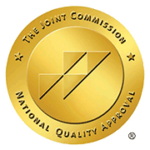Everything You Need to Know About Adderall for Mental Health

Adderall sometimes shows up in mental health care when someone has issues around focus and energy. It’s well known for treating ADHD (Attention-Deficit/Hyperactivity Disorder), but it’s also used in conditions where mental alertness drops too quickly or too often.
Adderall is a stimulant, though this doesn’t always mean it speeds things up. In fact, what it really does is support the brain’s regulation systems by impacting how certain chemicals pass through the brain. When these chemicals (dopamine and norepinephrine) work more efficiently, tasks that require attention can become more manageable.
A healthcare provider can help you better understand whether Adderall could be a good fit for your needs. This guide can also help you better understand Adderall and how it’s used, discussing…
- What Adderall is prescribed for
- Adderall side-effects
- Adderall dosages
- Signs of Adderall abuse and how to stop safely
- How Adderall compares to Ritalin
- Where to get Adderall and mental health support

What Is Adderall Used For?
Some people take Adderall for attention-related issues. Others use it to manage extreme fatigue that hits during the day, even after they’ve slept all night. In other words, while the diagnosis might be different – ADHD or narcolepsy – the aim is similar: to help the brain hold focus and stay alert.
Adderall works by increasing the activity of certain brain chemicals called “dopamine” and “norepinephrine.” These chemicals don’t necessarily show up in higher amounts because of Adderall, but the medication helps them stay in the system longer and work more effectively. This change helps settle the nervous system into a more focused, steady state.
Let’s take a closer look at how Adderall can help with two conditions it’s commonly prescribed for: ADHD and narcolepsy.
Adderall for ADHD
For people with ADHD, distraction isn’t always about willpower. The signal to focus is there, but it gets buried, or it doesn’t hold. Thoughts might jump, stall out, or shift direction mid-task. For this reason, providers often prescribe Adderall for ADHD.¹
Taking Adderall for ADHD doesn’t fix problems with attention entirely, but it can help the brain sort through competing inputs. For instance, when it supports the prefrontal cortex, things like task switching, short-term memory, and delayed responses can become a little more reliable.
This shift can make space for other tools like therapy or environmental structure to work better than they could on their own.
Adderall for Narcolepsy
Narcolepsy doesn’t just make people tired, it disrupts the brain’s ability to control when sleep happens. For example, some people experience sudden sleep episodes during the day, while others just feel constantly drained.
Adderall can help people with narcolepsy by stimulating the central nervous system.² Its effect isn’t dramatic for everyone. But for some, it reduces the number of sleep attacks or helps them stay more alert through daily tasks. Yet Adderall is rarely used on its own for narcolepsy. Most treatment plans include scheduled naps, consistent sleep routines, and regular follow-up to track how things shift over time.
Side Effects of Adderall
The side effects of Adderall vary depending on dose, metabolism, and how long the medication is used. Some Adderall side effects are temporary and fade as the body adjusts. However, others may last longer or feel more disruptive over time.
Common side effects of Adderall include:³,⁴
- Decreased appetite
- Trouble falling or staying asleep
- Headaches
- Dry mouth
- Increased heart rate
- Irritability or restlessness
- Stomach discomfort
- Elevated blood pressure
Not everyone experiences the same symptoms. Side effects of Adderall for adults may change depending on whether the medication is short-acting or extended-release, and how it interacts with other medications or conditions. Regular check-ins with a provider help track what’s tolerable and what might need to be adjusted.
Adderall and Anxiety
For some people, Adderall sharpens focus and reduces restlessness, while for others, it can raise background tension, especially if anxiety is already present.
This effect is usually tied to how the medication stimulates the nervous system. When norepinephrine levels rise too quickly, the body may interpret this as stress. As a result, the heart rate speeds up, breathing may feel shallow, and thoughts might race. All symptoms of anxiety.
In clinical care, this reaction doesn’t always mean the medication has to stop. Sometimes, adjusting the dose of Adderall for adults, changing the formulation, including anti-anxiety medication, or adding behavioral tools can bring things back into balance.
Long-Term Effects of Adderall
Over time, the body can adapt to stimulant medication. This might mean needing a higher dose to get the same effect, or noticing side effects that didn’t show up early on. As a result, there may be long-term effects of Adderall use, which may include changes to:⁵
- Appetite and weight
- Sleep quality and circadian rhythm
- Blood pressure and heart rate
- Mood regulation
- Emotional sensitivity or reactivity
- Working memory and attention flexibility
Not all long-term Adderall use causes problems, but tolerance and dependence are possible, especially at higher doses. This is why providers often revisit the treatment plan regularly, taper if needed, or explore alternatives if the benefits begin to shift.
Adderall Dosage
Adderall dosing depends on age, diagnosis, body weight, and how the medication is metabolized. Most mental health care providers begin with an Adderall dosage chart that is low and make small adjustments based on symptom response and side effects. In general, the goal is always to use the lowest effective dose that offers symptom relief without creating disruptive side effects.
Doctors prescribe either the Adderall tablet or Adderall XR capsule for ADHD. If you take the tablet, your starting dose will likely be 5 milligrams once or twice per day.⁶ Your prescriber may also recommend increasing the dose each week. However, the maximum amount someone can take is 40 milligrams per day.
The Adderall XR capsule starting dose is usually around 20 milligrams taken once a day. The maximum a person can take of the XR tablet is 20 milligrams.
How Fast Does Adderall Work?
Immediate-release Adderall usually starts working within 30 to 60 minutes. Extended-release versions may take a bit longer, sometimes closer to 90 minutes, because the medication is designed to release gradually.
The onset of the medication can also shift depending on food intake, metabolism, and whether the body has built up any tolerance. For instance, some people feel the shift in energy or clarity quickly. For others, it’s more subtle with quieting of background noise or less mental clutter.
How Long Does Adderall Last?
The effects of immediate-release Adderall typically last between four to six hours. However, extended-release versions stay active for closer to 10 to 12 hours.
It’s good to be aware that these timelines aren’t exact. Some people process the medication more quickly, so the effects may wear off earlier. Yet others may feel the medication lingering into the evening, especially at higher doses.
For this reason, mental health treatment teams often time doses around the demands of the day that require sustained focus (such as work, school, driving, or tasks). Adjustments happen gradually based on how long the coverage actually lasts, not just what’s on the label.
The Risks of Adderall Misuse
Adderall is a Schedule II controlled substance, which means it can be habit-forming, particularly at higher doses or when used without medical supervision.⁷,⁸
The medication increases dopamine in the brain’s reward system.⁹ This is part of what makes it effective, but it also means it can create a reinforcing loop. For instance, if the dose rises too quickly or if it’s taken more often than intended, dependence can develop.
Using Adderall for reasons beyond medical guidance – like staying awake longer, improving your productivity, or suppressing your appetite – can increase the likelihood of misuse. Even with prescribed use, it’s important to monitor for changes in tolerance or psychological dependence and speak with a healthcare provider regularly.
Adderall Abuse Signs
Adderall misuse isn’t always obvious at first. It may start with extra doses during high-stress periods or skipping rest to stay productive. Yet, over time, this pattern can shift into something harder to control.
Possible signs of Adderall abuse include:
- Taking more than the prescribed dose
- Using without a prescription
- Crashing after effects wear off
- Restlessness or mood swings
- Difficulty sleeping
- Obsessive focus on productivity
- Hiding use or becoming defensive about it
Physical misuse signs may also show up, such as elevated heart rate, shakiness, or extreme fatigue once the medication wears off. When these symptoms appear, a review with a provider can help clarify whether the medication is still being used safely.
Stopping Adderall Safely
It’s not a good idea to stop Adderall all at once, especially after daily use. The nervous system adjusts to stimulant input over time, and when this input disappears suddenly, things can feel “off.”
For example, withdrawal symptoms may creep in as low motivation, foggy thinking, irritability, or physical fatigue that seems to build over a few days. This delayed response is part of what makes a slower taper safer.
Rather than quitting abruptly, most mental health care teams help with stopping Adderall safely by reducing the dose gradually. This approach gives the brain time to adapt and lowers the risk of rebound symptoms.
Adderall Withdrawal Symptoms
Stopping stimulants too quickly can cause withdrawal symptoms, even at moderate doses. These aren’t the same for everyone, but certain patterns tend to show up.
For instance, some people notice the following Adderall withdrawal symptoms:¹⁰
- Slower thoughts or “brain fog”
- Mood drops, sometimes with irritability
- Sleep shifts, either getting too much sleep or not enough
- Bigger appetite than usual
- Restlessness
- Body aches
- Anxiety that wasn’t there before
Not all of these withdrawal symptoms happen at once, and some may be barely noticeable. Still, even mild symptoms can affect how someone moves through the day. A slower taper usually makes the transition off Adderall easier to handle.
How to Taper Off Adderall
There isn’t a fixed rule for how to taper off Adderall. It depends on the starting dose, how long the medication’s been in use, and how the person reacts when changes are made.
Yet, in general, tapers tend to move slowly. Sometimes the dose is lowered by a few milligrams each week. In other cases, extended-release versions are swapped for immediate-release, so smaller steps can be taken.
Providers usually track things like sleep, energy, focus, and emotional response. The goal isn’t just to stop the medication. It’s to shift out of it without creating new issues along the way.
Adderall vs Ritalin
Adderall and Ritalin are both stimulants used to treat ADHD, but they don’t work the same way for everyone. This is because the active ingredients are different. Adderall contains mixed amphetamine salts, while Ritalin (methylphenidate) works on a slightly different part of the brain’s reward system.
For some people, Adderall lasts longer, or its effects feel steadier. Others may find that Ritalin kicks in faster and fades more cleanly by the end of the day. Side effects can also vary. One might cause more sleep disruption or appetite changes, while the other could feel easier to tolerate.
Often, finding the right fit comes down to trial and observation. When comparing Adderall vs Ritalin, you will find that both medications affect dopamine and norepinephrine, but the timing, intensity, and overall feel can differ from person to person.
Reach Out to Mission Connection for Adderall and Mental Health Guidance
Navigating treatment for focus, fatigue, or attention struggles doesn’t have to be done alone. Whether Adderall is already part of your treatment plan or it’s just being considered, support can make the process more manageable.
At Mission Connection, care begins with a clear picture – not just of symptoms, but of how they’re affecting daily life. Our team works with each client to understand what’s working, what’s not, and what might make things more stable in the long term.
If you’re ready to talk through options or just need a space to ask questions, contact our 24/7 available team. We’re here to help.

References
- Faraone, S. V., & Biederman, J. (2002). Efficacy of Adderall for Attention-Deficit/Hyperactivity Disorder: A meta-analysis. In National Center for Biotechnology Information. Retrieved May 27, 2025, from https://www.ncbi.nlm.nih.gov/books/NBK69423/
- Turner, M. (2019). The treatment of narcolepsy with amphetamine-based stimulant medications: A call for better understanding. Journal of Clinical Sleep Medicine, 15(5), 803–805. https://jcsm.aasm.org/doi/10.5664/jcsm.7788
- Rees, M. (2021, September 9). What effects can Adderall have on the mouth and tongue? Medical News Today.https://www.medicalnewstoday.com/articles/how-to-get-rid-of-adderall-tongue
- Nanda, A., Janga, L. S. N., Sambe, H. G., Yasir, M., Man, R. K., Gogikar, A., & Mohammed, L. (2023). Adverse effects of stimulant interventions for attention deficit hyperactivity disorder (ADHD): A comprehensive systematic review. Cureus, 15(9), e45995. https://www.ncbi.nlm.nih.gov/pmc/articles/PMC10601982/
- Medical News Today. (n.d.). Long-term study proves Adderall XR is a safe and effective option to treat adults with ADHD. Medical News Today. Retrieved May 27, 2025, from https://www.medicalnewstoday.com/releases/8019
- Weiser, P. (2024, September 16). Adderall dosage. Medical News Today.https://www.medicalnewstoday.com/articles/drugs-adderall-dosage
- Chen, L.-Y., Crum, R. M., Strain, E. C., Alexander, G. C., Kaufmann, C., & Mojtabai, R. (2016). Prescriptions, nonmedical use, and emergency department visits involving prescription stimulants. The Journal of Clinical Psychiatry, 77(3), e297–e304. https://www.ncbi.nlm.nih.gov/pmc/articles/PMC5903919/
- U.S. Food and Drug Administration. (n.d.). Adderall (amphetamine and dextroamphetamine) label information. Retrieved May 27, 2025, from https://www.accessdata.fda.gov/drugsatfda_docs/label/2007/011522s040lbl.pdf
- University of Copenhagen. (2012, November 9). ADHD medicine affects the brain’s reward system. Science Daily.https://www.sciencedaily.com/releases/2012/11/121109111521.htm
- Nall, R. (2018, April 13). Adderall crash: Timeline, tips, and remedies. Medical News Today.https://www.medicalnewstoday.com/articles/321492





